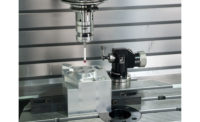Digital transformation is largely about automating to increase profit and productivity, improve consistency, reduce errors and repetitive labor, and improve customer satisfaction. How you choose to automate matters. Forbes, McKinsey, and KPMG have all recently estimated the failure rate of digital transformation efforts to be in the 70-95% range. With this track record, we should look before we leap as that rock may actually be an alligator.
Automation is not just a bandwagon to climb on. It requires a real problem and the right fit for the technology to provide benefits. As they say, don’t treat it as a technology looking for a problem.
Another consideration is the lifetime costs/benefits from a specific automation. An inexpensive solution may initially produce some gains, but those could erode quickly if the automation degrades or ceases to function. This could leave you in a bind if you temporarily reduce your costs and pass some of those costs on to your customers and then the automation proves to be fleeting. Do the math and make reasonable assumptions about the automation over its entire projected lifetime.
Lastly, think outside your normal context. Take the opportunity to think about what you are automating - are we simply automating what we have always done? Are there unnecessary steps we could remove? Are there better, faster, more precise methods with newer technology?
Assess Your Current Manufacturing Processes
Automation is revolutionizing manufacturing. Advances in technology, including robotics, computer numerical control (CNC) machines, automated guided vehicles, 3D printing, artificial intelligence (AI), robotic process automation, machine learning, Internet of Things, and augmented reality are transforming the manufacturing process. The million-dollar question is, why are some companies making huge gains with automation, but the remaining 70-95% are failing? In this article, we will explore how to leverage automation to improve your manufacturing and how to determine what to consider automating.
Evaluation
Before you implement automation, evaluate your current manufacturing processes to identify which areas can be automated and which ones require human intervention. You need to identify the tasks that are repetitive, time-consuming, and require a high degree of precision or accuracy. This evaluation will help you determine which automation technologies are the most suitable for your business.
Many people may not understand that it is not a one-size-fits-all solution. Each business has unique needs and challenges that will impact the effectiveness. As quality professionals, when we evaluate automation possibilities, we need to translate the benefits into the financial language of executives.
The Misconception
A common misconception about automation in manufacturing is that it will completely replace human workers. While automation can certainly replace some menial, redundant or superfluous tasks traditionally performed by humans, it often creates new opportunities for workers.
Additionally, implementing automation is not an overnight solution. It requires careful planning to ensure that the technology is effective. The implementation may also require significant investments in technology, training and infrastructure.
The Automationart
Many of the promises of digital transformation result in the automation of repeatable steps, removing the human delays, effort, variability and dependence. Automation is a process. A process of learning, adapting, overcoming obstacles and maintaining relevance.
Look for areas where automation can provide the most significant improvements in efficiency, quality and cost savings. Involve your employees in the process to ensure a smooth transition and provide training and support to help them adapt to the new technology. Their involvement also has a very important and positive effect; they understand how technology can help them. They are less intimidated by its introduction and more supportive, which will increase adoption.
When determining what to consider automating, approach the process systematically. Automation is not a set-it-and-forget-it solution. The technology and processes must be continually monitored, evaluated, and adjusted to ensure that they are meeting the needs of the business and delivering the expected benefits.
Areas Of Focus
Identify your business goals: Determine what areas have a good fit for automation technologies.
Analyze your current manufacturing processes: Determine which tasks are repetitive, require a high degree of accuracy or precision and are time-consuming.
Evaluate the potential benefits of automation: Once you have identified the areas of your manufacturing process that are most suitable for automation, evaluate the potential benefits of automating those tasks.
Consider the costs of automation: Determine the cost of purchasing, installing, and maintaining the automation technologies, as well as the cost of training your employees.
Evaluate the impact on your workforce: Will automation result in job losses, or will it create new job opportunities? If there are job losses, consider how you can support your employees through the transition.
Prioritize automation initiatives: Prioritization should be based on potential impact on your business goals, the potential benefits, the costs associated with it and the impact on your workforce.
Develop a plan for implementation: Consider the timeline for your automation initiatives, the resources required, and the potential impact on your business.
By following these steps, you can systematically determine what to consider automating. This will enable you to implement initiatives that will have the greatest impact.
Fail To Plan - Plan To Fail
Failing to properly analyze your current processes: Before implementing automation, it is important to perform an analysis to determine which tasks are suitable. Failure to do so may result in automating the wrong tasks, leading to little or no improvement in productivity or quality.
Over-automating: Automating too many tasks can result in unnecessary costs and complexity.
Failing to involve employees: It is important to involve employees in the process and provide them with training and support to ensure successful adoption of the new technology.
Neglecting maintenance and updates: Neglecting maintenance and updates of the automation technology can result in decreased efficiency and increased downtime. Have a plan for regular maintenance and updates to ensure the technology continues to function properly.
Ignoring cybersecurity risks: Automation technology can be vulnerable to cyberattacks, which can compromise sensitive data and disrupt operations. Implement cybersecurity measures, such as firewalls and encryption, to protect against cyber threats.
Failing to consider the impact on the supply chain: Automating certain tasks can affect suppliers and customers. Consider the potential impact on the supply chain and communicate with stakeholders to ensure a smooth transition.
By avoiding these common failures, business owners can increase the likelihood of successful automation and improve efficiency, productivity and quality in their manufacturing business.
Vision & Sensors
A Quality Special Section
Automation is a powerful tool that can provide significant benefits when used correctly. It requires careful planning, evaluation, and ongoing monitoring and maintenance to ensure its effectiveness. It is not a replacement for human workers, but rather a tool to improve efficiency, costs and quality. Automation can also help improve safety and working conditions for workers by reducing their exposure to hazardous tasks or environments.
Conclusion
In the study referenced at the start, over 70% of automation projects fail to meet expected results. A primary catalyst for this is the lack of involvement by the business as a whole, the lack of planning and diligence and the reliance upon a single department such as IT or quality to manage this change. This is where using quality to support these initiatives will help change the 70% chance of failure into a 93% chance of success.
But this can only happen where QMS is seen as the core competence and business differentiator within the organization instead of a necessary requirement for compliance. Those quality practices can determine if your next step will be a rock or an alligator.


